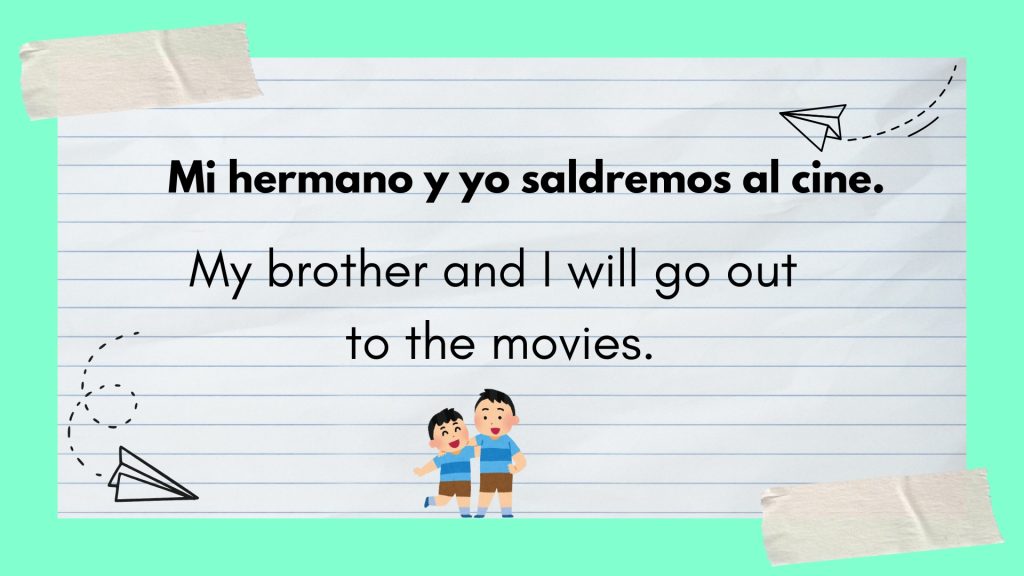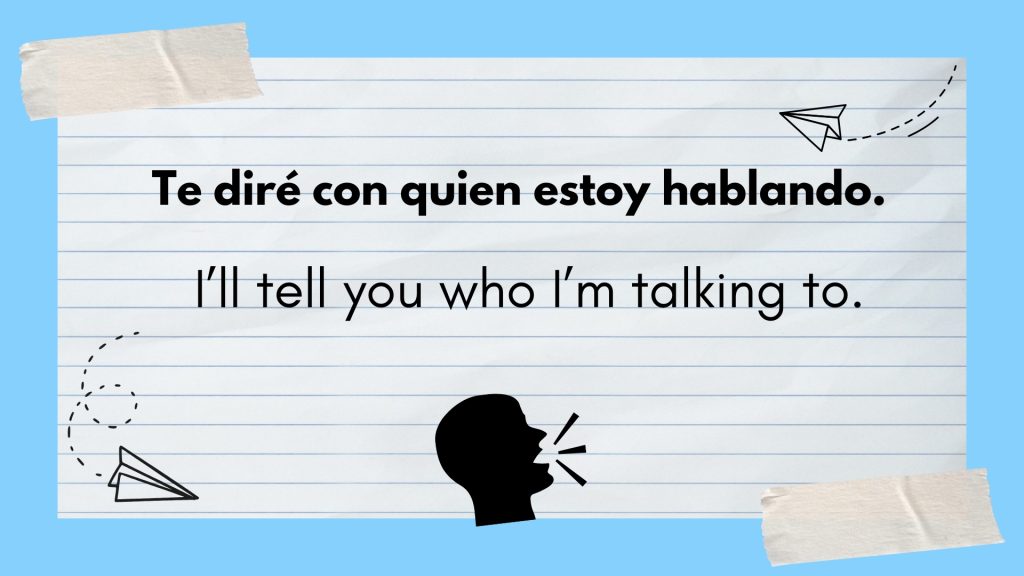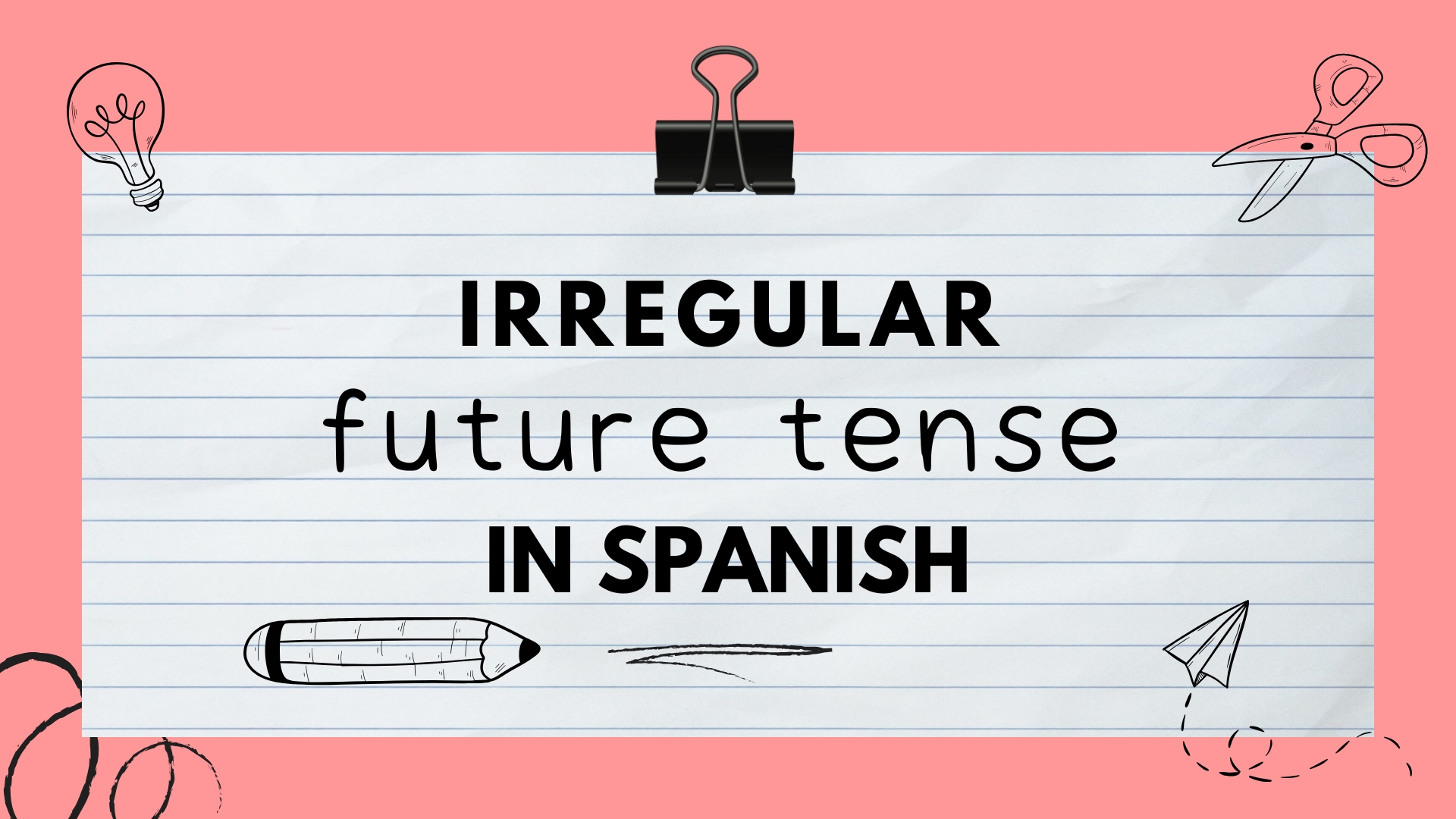Learning the irregular future tense in Spanish can be tough. Unlike regular verbs that simply tack on endings, verbs like ‘decir’ and ‘hacer’ change to ‘diré’ and ‘haré.’ This isn’t just about memorizing; it’s about understanding the history and sounds of the language.
When we dive into these changes, we get a clearer picture of how Spanish works and what makes it unique.
So, why does this matter for learning Spanish? Well, knowing these quirks can really help with becoming fluent. It’s an interesting topic that could use more exploration. What do you think?
Irregular Verbs in Spanish
If you’re looking to get really good at Spanish, you’ll need to nail down the irregular verbs in the future tense. Here, we’ll go through a bunch of them, showing you how their roots twist and turn once you conjugate them. Knowing these changes really matters if you want to speak Spanish well, especially when you’re talking about stuff that hasn’t happened yet.
1. Caber → Cabré (to fit)
Example: Ese coche es pequeño, no sé si cabré ahí.
(That car is small, I don’t know if I will fit there.)
- The verb caber (to fit) is irregular in the future tense.
- The “e” in caber disappears and changes to cabr before adding the endings.
- Cabré, cabrás, cabrá, cabremos, cabréis, cabrán.
2. Valer → Valdré (to be worth)
Example: Ese cuadro es antiguo, valdrá una fortuna.
(That painting is old; it will be worth a fortune.)
- Valer (to be worth) follows a pattern similar to salir and tener.
- The -er changes to -dr before adding the endings.
- Valdré, valdrás, valdrá, valdremos, valdréis, valdrán.
3. Haber → Habré (to have – auxiliary verb)
Example: Para mañana, ya habré terminado mi trabajo.
(By tomorrow, I will have finished my work.)
- Haber (used to form compound tenses) changes to habr- in the future.
- It’s often used in perfect tenses like habré hecho (I will have done).
- Habré, habrás, habrá, habremos, habréis, habrán.
4. Decir → Diré (to say)
Example: Mañana te diré mi secreto.
(Tomorrow, I will tell you my secret.)
- The verb decir (to say) drops the ec and becomes dir.
- Diré, dirás, dirá, diremos, diréis, dirán.
5. Querer → Querré (to want)
Example: Algún día querré viajar por todo el mundo.
(One day, I will want to travel around the world.)
- Querer (to want) doubles the r in the future tense.
- Querré, querrás, querrá, querremos, querréis, querrán.
Become a Pro at Spanish Stem-Changing Verbs!
List Of Irregular Spanish Verbs in Future Tense
Spanish verbs can be tricky in the future tense, especially the ones ending in -er and -ir. Often, these verbs change their roots, or for some -er verbs, they even drop an ‘e’ before adding the future tense endings.
Then, there’s a whole other group of verbs that just don’t follow any rules at all. If you’re learning these, you’ll just have to memorize each one on its own. It’s a bit of a headache, but once you get the hang of it, it starts to make more sense.
Irregulars: -er and -ir verbs
Many -er and -ir verbs in Spanish change a bit when you talk about the future. For example, verbs like ‘tener’ (which means to have) and ‘salir’ (which means to go out) switch up their stems to ‘tendré’ and ‘saldré’ when you’re saying you will do something.

- Cabré (caber) – “I will fit”
- Cabré en ese traje para la boda. → “I will fit in that suit for the wedding.”
- Valdrá (valer) – “It will be worth”
- Ese consejo valdrá oro en el futuro. → “That advice will be worth gold in the future.”
- Vendremos (venir) – “We will come”
- Vendremos temprano a la reunión. → “We will come early to the meeting.”
- Saldrás (salir) – “You will go out”
- Si terminas la tarea, saldrás con tus amigos. → “If you finish your homework, you will go out with your friends.”
- Tendrán (tener) – “They will have”
- Tendrán muchas oportunidades si estudian. → “They will have many opportunities if they study.”
| Verb | Future Stem | Explanation |
|---|---|---|
| haber | habr- | The ‘e’ in haber disappears, forming habr-. Example: habrá (there will be). |
| poder | podr- | The ‘o’ in poder is removed, giving podr-. Example: podré (I will be able to). |
| querer | querr- | The ‘e’ in querer is doubled, creating querr-. Example: querré (I will want). |
Irregulars: -er verbs only
When we talk about -er verbs, they change a bit when you use them to talk about the future. Take ‘tener’ for example. In the future tense, it becomes ‘tendré’.
This means the stem changes from ‘ten-‘ to ‘tendr-‘. It’s important to know these changes to get the verb right and to clearly express future actions.

- Sabré (saber) – “I will know”
- Sabré la respuesta mañana. → “I will know the answer tomorrow.”
- Podrás (poder) – “You will be able to”
- Podrás viajar cuando ahorres más dinero. → “You will be able to travel when you save more money.”
- Habrán (haber) – “There will be (plural)”
- Habrán muchas sorpresas en la fiesta. → “There will be many surprises at the party.”
- Querré (querer) – “I will want”
- Después del trabajo, querré descansar. → “After work, I will want to rest.”
- Deberá (deber) – “He/She/It will have to”
- El equipo deberá mejorar para ganar. → “The team will have to improve to win.”
| Verb | Future Stem | Explanation |
|---|---|---|
| caber | cabr- | The ‘e’ in caber is removed, forming cabr-. Example: cabré (I will fit). |
| saber | sabr- | The ‘e’ in saber drops, making sabr-. Example: sabrás (you will know). |
| valer | valdr- | The ‘e’ in valer changes to ‘d’, forming valdr-. Example: valdrá (it will be worth). |
Irregulars with no rules
Some future tense verbs in Spanish just don’t play by the usual rules, and that can be tricky for learners.
For instance, ‘tener’ (to have) turns into ‘tendré,’ and ‘hacer’ (to do/make) becomes ‘haré.’
You’ll need to remember these because they aren’t regular.
Getting these forms right is key to speaking and understanding Spanish well when talking about future plans or events.

- Haremos (hacer) – “We will do/make”
- Haremos todo lo posible para ayudarte. → “We will do everything possible to help you.”
- Diré (decir) – “I will say”
- Te diré la verdad cuando estemos solos. → “I will tell you the truth when we are alone.”
- Irán (ir) – “They will go”
- Irán a la playa el fin de semana. → “They will go to the beach on the weekend.”
- Estará (estar) – “He/She/It will be”
- El museo estará cerrado el lunes. → “The museum will be closed on Monday.”
- Seremos (ser) – “We will be”
- Seremos amigos para siempre. → “We will be friends forever.”
| Verb | Future Stem | Explanation |
|---|---|---|
| decir | dir- | The ‘ec’ in decir becomes dir-. Example: diré (I will say). |
| hacer | har- | The ‘ac’ in hacer turns into har-. Example: haré (I will do). |
| salir | saldr- | The ‘ir’ in salir changes to ‘dr’, forming saldr-. Example: saldré (I will go out). |
Examples of irregular Spanish verbs in future tense
In Spanish, some future tense verbs change their roots in unique ways. It’s important to remember these changes.
For example, ‘tener’ becomes ‘tendré’, ‘salir’ turns into ‘saldré’, and ‘hacer’ changes to ‘haré’. These are not the usual patterns, so they can be tricky for learners.
You really need to practice and memorize them to use them correctly.
| Verb | Future Stem | Example Sentence | Translation |
|---|---|---|---|
| haber | habr- | Mañana habrá una reunión importante. | Tomorrow, there will be an important meeting. |
| poder | podr- | Podré visitarte la próxima semana. | I will be able to visit you next week. |
| querer | querr- | ¿Querrás viajar conmigo a España? | Will you want to travel with me to Spain? |
| caber | cabr- | Ese mueble no cabrá en la habitación. | That piece of furniture will not fit in the room. |
| saber | sabr- | Mañana sabrás toda la verdad. | Tomorrow, you will know the whole truth. |
| valer | valdr- | Ese coche valdrá una fortuna en el futuro. | That car will be worth a fortune in the future. |
| decir | dir- | Te diré la respuesta más tarde. | I will tell you the answer later. |
| hacer | har- | Haré todo lo posible por ayudarte. | I will do everything possible to help you. |
| salir | saldr- | Saldré temprano para evitar el tráfico. | I will leave early to avoid traffic. |
Conclusion
To put it simply, knowing irregular verbs in Spanish future tense is crucial if you want to communicate well.
Take for example how ‘tener’ changes to ‘tendré’ and ‘hacer’ to ‘haré’. These changes show just how tricky Spanish verbs can be.
Using these forms correctly is key to clearly stating what you plan to do in the future.
So, it’s really important to focus and learn these irregular patterns if you want to speak Spanish fluently and accurately.
Stay Curious, Stay Inspired with Lingua Viva!
Carolina is a charming and lively member of Lingua Viva with 11+ years of teaching experience. She loves to teach students appropriate ways to communicate effectively in Spanish without the fear of making mistakes. She holds a professional teaching license and has a graduate degree with emphasis in Foreign Language.











